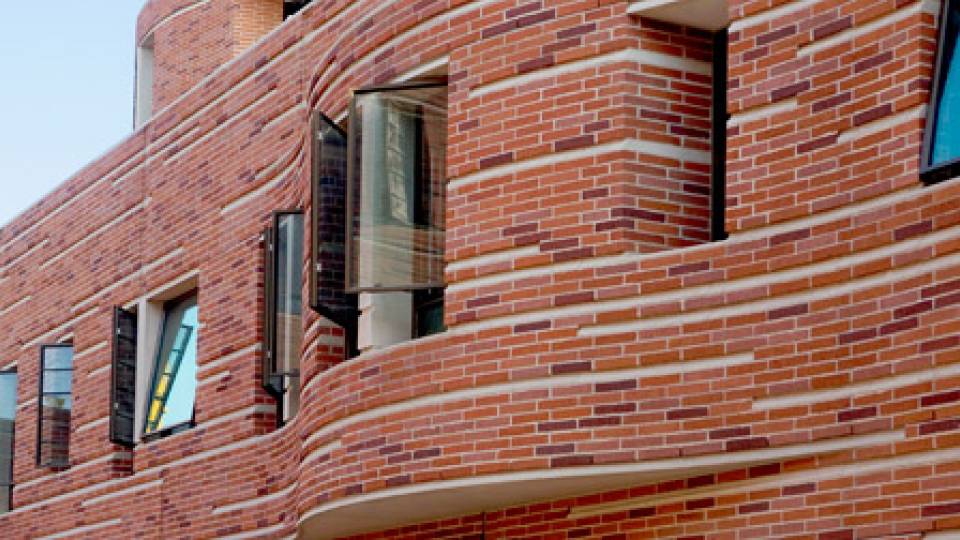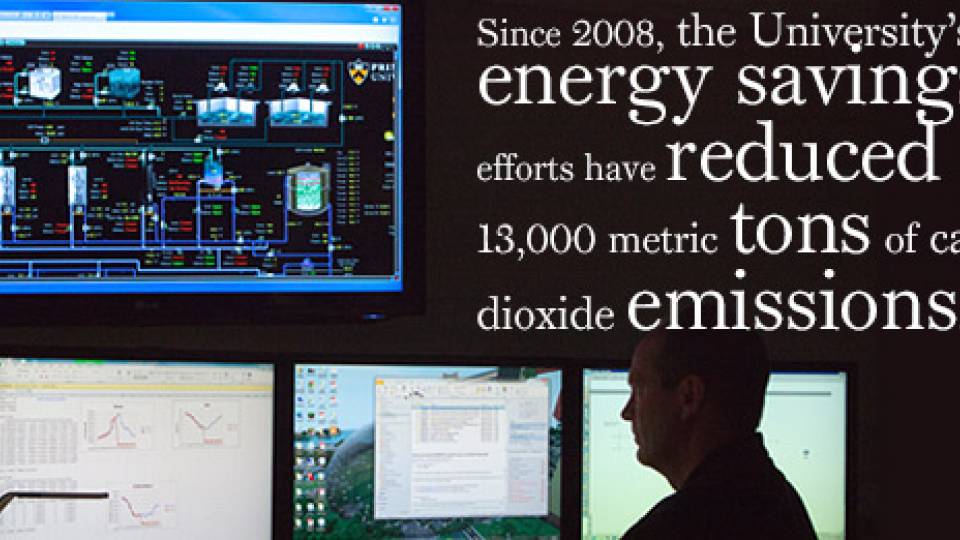Air quality tests conducted in the basements of two residential buildings on Princeton's campus this week confirmed elevated levels of radon in an isolated area of one of the buildings. As tests continue, the University is developing a remediation plan in consultation with experts in abatement and remediation, and campus environmental health officials maintain there is no imminent risk to the public.
"The risk associated with a short-term exposure to radon in the levels we detected in Forbes College is very small," said Sue Dupre, University health physicist in the Office of Environmental Health and Safety, of the air quality in the building where elevated levels were found. The Forbes library, which has been closed since May 2, will remain closed.
Tests conducted at the Forbes College residence hall to measure radon levels in the library and computer room -- both located in the basement -- detected a concentration level of 7.5 picocuries per liter (pCi/L) in the library and 2.4 pCi/L in the computer room. According to the U.S. Environmental Protection Agency, the average indoor radon level is about 1.3 pCi/L. The EPA recommends steps be taken to reduce levels above 4.0 pCi/L.
"At the radon level detected in Forbes, even for a student who spent three hours daily in the library every day of the nine-month academic year, we estimate that the risk of developing cancer would be only about .0025 percent greater than the same person exposed to the average indoor radon level of 1.3 pCi/L," Dupre said. "The value of this calculation is to demonstrate the minimal level of the potential risk, yet we are committed to reducing these levels through remediation procedures."
Radon is a naturally occurring radioactive gas that is tasteless, odorless and colorless and comes from the breakdown of uranium in soil, rocks and water. Levels of radon are common in breathable air and can penetrate any type of building, typically moving up through the ground through cracks and other holes in the foundation.
A group of students participating in a lab for a physics course notified University administrators May 1 that levels of radon in the basement library of Forbes College and in the basement of the upperclass dorm Edwards Hall were significantly higher than the air in the laboratories they used as a baseline for their tests.
The University closed the areas in question in Forbes May 2 to validate the students' results, while preliminary testing of Edwards indicated there was no cause for closing that basement space. University testing also of residential areas immediately adjacent to the basements of Forbes and Edwards found radon levels well within guidelines established by the EPA. This week's testing of the Edwards basement, including the laundry room and student mailbox area, confirmed radon levels in the range of 0.8 pCi/L to 1.9 pCi/L -- well within acceptable levels.
The computer room in Forbes that tested within acceptable levels has been opened. The Forbes library will remain closed while further testing continues as part of efforts to develop a remediation plan, said Thomas Nyquist, director of Department of Engineering Facilities.
"This remediation could include installing vacuum systems, exhaust systems to vent air to the outside and sealing cracks in the concrete foundation," Nyquist said. "As an additional precaution, other campus facilities will be retested to measure radon levels beginning this summer."

